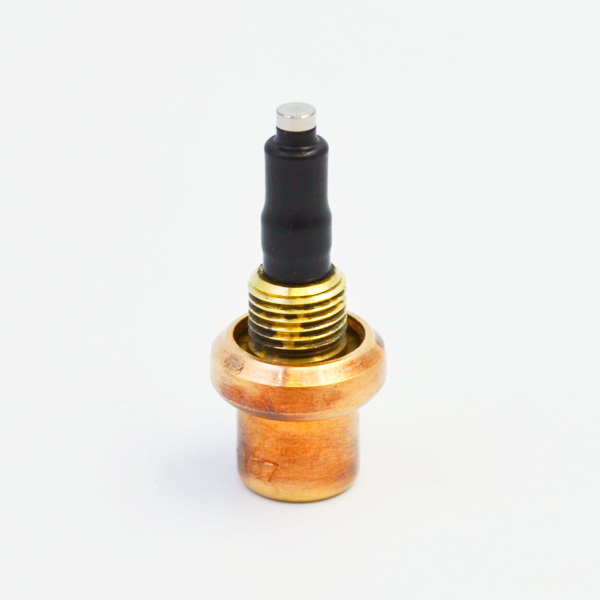The birth of the manipulator has the practical significance of liberating productivity. The control of the angle of the manipulator is particularly important. Therefore, the automatic control of the angle of the manipulator is designed by using the PID control.
The designed automatic controller has four degrees of freedom, which is composed of PLC, stepper motor and SH? 215B stepper motor driver. The stepper motor driver receives the rotation command from the PLC. The positioning information contained in the rotation command is given by BCE58K20 incremental photoelectric encoder in the stepper motor, and then controls the rotation of the manipulator arm. Under the control of ordinary PID, the integral control loop of PLC is easy to overshoot. Fuzzy technology is used to fuzzify the ordinary PID control. With the help of separation technology, the influence of integral overshoot on the manipulator’s action is reduced. Fuzzy separation PID control is proposed.
The experimental results show that the degree of freedom of the automatic controller based on Fuzzy separated PID control is more flexible than that based on other control strategies. Modern industrial machinery is closely related to automation. In 1958, the first industrial robot came out in the United States. With the progress of science and technology, industrial robots have entered tens of millions of factories. Especially in recent years, the mechanical arm has played a huge role in the transfer of dangerous products and fragile products. Manipulator can realize automatic angular positioning under programming control and can move objects in any environment. Its main structure includes automatic controller, remote monitoring platform, execution platform, etc. It covers many disciplines such as machinery, electricity, sensing, etc. The purpose is to improve industrial production efficiency and reduce production costs.
The degree of freedom of the manipulator determines its migration force. The degree of freedom is generally located at the corner point. Therefore, the control of the angle of the manipulator is particularly important. The design should be based on improving the flexibility of the degree of freedom. The stepper motor of the manipulator angle automatic controller needs 500 pulses of constant current driving force.

SH? 215B subdivision driver is a half-step subdivision driver. It uses bipolar constant current chopper driving technology. The chopper frequency is higher than 38 kHz, and the maximum driving current of each item is 2.8 A. It uses 25 V DC power supply, and no pulse current is output when passing through the fuselage. The current is automatically changed to the original [12], which saves electric energy and perfectly solves the shortcomings of large vibration and weak driving force caused by common constant current drive [1]. When the pulse signal level gradually rises to the rated value, SH? 215B sends the angle command to the stepper motor. The subdivision multiple is determined by the angle of rotation command. Each 1.8 degree represents a step. Whether the step output is controlled by the switch, as shown in Table 1, “” is on and “*” is off. Table 1 Stepper motor driver subdivision parameter table 1 is SH? 215B wiring diagram. From Figure 1, we can see that there are three kinds of signals input by PLC into SH? 215B: rotation angle, rotation speed and enabling signal, enabling signal to control switching status, such as opening and closing, which can be overhead under 16 and 32 times of subdivision. Figure 2 shows the structure of PLC. PLC is composed of power supply, dynamic memory, programmable elements and various types of interfaces. The default control strategy of programmable elements is ordinary PID control. In order to respond to the constant current driving force of stepper motor, ordinary PID control adopts constant current mode. The rotation angle and speed are input into the rotation angle command to control the stepper motor output steady current [2]. In the formula, [u(t)] is the output of the automatic control of the rotation angle of the manipulator, in V; [e(t)] is the control deviation, in V, equal to the difference between the standard value of parameters and the actual value of parameters, that is, [e(t)=r(t) -c(t)]; [KD, KP, KI] is the parameter term of differentiation, proportion and integral, without units. As shown in Figure 3, once the control deviation [e (t)], the proportional control loop immediately balances the output current of the stepper motor according to the control deviation [e (t)], and reduces the value of [e (t)]. The integral control loop is controlled by the manipulator’s motion error [0te (t) dt], which can reduce the steady-state error and enhance the stepping motor’s stability control ability.

The proportion of the integral control loop is proportional to the control time. If the control time is too long, the reliability of the whole automatic controller will be reduced. The term [de(t)dt] of differential control loop is used to express the dynamic change of the control effect of automatic controller. When the change is not ideal, the over-regulation is started, the control time is reduced, and the bad control situation is changed. However, too short control time is not conducive to balancing noise, and the reliability of automatic controller will also be reduced. In the formula, [k] is the number of acquisitions, [u (k)] is the output of the automatic controller of the [k] acquisition, [e (k), e (k-1)] is the control deviation of the [k, k-1], and [T] is the time of acquisition. Because ordinary PID control fails to give the control proportion of proportion, integral and differential, the control effect of integral control loop is easy to overshoot (the anti-interference of the manipulator is good, the differential control is not easy to overshoot), which increases the reliability of the manipulator angle automatic controller. In fact, the control ratio can not be given accurately. There are two ways to improve this problem. One is the fuzzy technology, the other is the separation technology. The control strategy of the automatic controller is improved by combining the fuzzy technology and the separation technology.

The principle of the fuzzy separation PID control is presented as shown in Figure 4. The items in the set of fuzzy parameters [E] in turn represent negative large, negative medium, negative small, balanced, positive small, positive medium and positive large. In the formula, [KD], [KP], [KI] is the increment of fuzzifying items selected from the set of fuzzy parameters [E], [KP], thermostatic element [KI]. The separation technology retains the stable output function of the integral control loop and reduces the influence of integral overshoot on the control effect of the manipulator. The realization of ordinary PID control fuzzification just simplifies the difficulty of integral separation. After fuzzification, the control domain between proportion, integral and differential is clearly divided. In order to verify the flexibility of the manipulator angle automatic controller, a hydraulic experimental device of the manipulator arm is built in this paper. The connecting principle of the experimental device is shown in Fig. 5. The experimental device connects the hydraulic cylinder and the load (the load is the manipulator arm) to form a closed loop with the distance sensor and the liquid level measuring system, and connects the manipulator angle automatic controller to the circuit. Three control strategies are sequentially filled in the PLC: ordinary PID control, constraint predictive control and the fuzzy separated PID control proposed in this paper. System. The rotation angle of the manipulator arm is determined by adjusting the piston height A1 and A2 of the hydraulic cylinder.
The data of A1 and A2 are fitted into rotation angle and speed information by distance sensor and liquid level measurement system, and then transmitted to the automatic control of the rotation angle of the manipulator arm for control. In order to enhance the experimental results, two hydraulic cylinders are used as control loops, and the control trajectory of the manipulator arm angle automatic controller is expressed by the composite data of the piston height sequence of the two hydraulic cylinders. As shown in Table 2, the piston height of the hydraulic cylinder 2 is exactly twice that of the hydraulic cylinder 1. At the same time, the information of rotation angle and speed fitted by distance sensor and liquid level measurement system is shown in Table 3. The data in Table 3 drive the automatic controller of the manipulator’s angle, and input the manipulator’s angle action into MATLAB to draw the control curve of the manipulator’s angle as shown in Figure 6. The general PID control and constrained predictive control in Fig. 6 show that the transition state of the curve is very unstable when receiving information of different rotation angles and velocities. The reason for this phenomenon is that the flexibility of the degree of freedom at the corner is not strong, the angular motion of the manipulator is rigid, and the control curve fluctuates obviously. The proposed Fuzzy Separation PID control curve has smooth transition state, more flexible degree of freedom and good corner control effect. In this paper, a Four-Degree-of-Freedom manipulator angle automatic controller is designed. In hardware aspect, the detailed parameters and wiring mode of stepper motor driver in the controller, as well as the structure of PLC are introduced. In the aspect of software, the control principle and shortcomings of common PID control used by default in PLC programming elements are introduced, and it is improved into fuzzy separated PID control. In the experiment, the flexibility of general PID control, constrained predictive control and fuzzy separated PID control are tested by setting up the hydraulic experimental device of the manipulator arm and the piston data of the compound hydraulic cylinder. The experimental results show that the flexibility of the control strategy is the strongest among the three.
